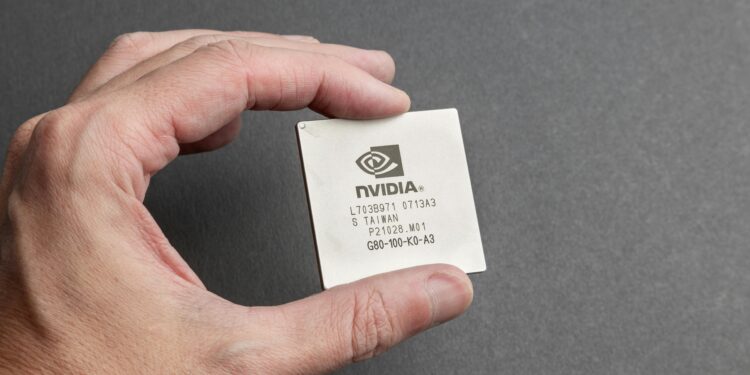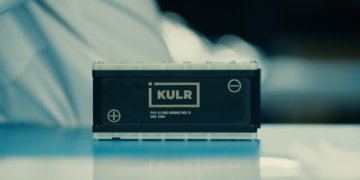Catalyst Funds’ David Miller Projects Record Q3 Earnings and Strong Growth in 2025
Nvidia (NVDA) remains at the forefront of the artificial intelligence (AI) revolution, benefiting from unprecedented capital expenditure (CAPEX) by hyperscalers like Meta, Amazon, and Microsoft. In a recent report, David Miller, Co-founder and Chief Investment Officer at Catalyst Funds, outlined his bullish outlook for Nvidia, citing its monopoly-like position in the AI chip market and the exponential growth in demand for compute power.
Anticipated Q3 Earnings Beat
Miller projects Nvidia will surpass Wall Street expectations for the third quarter, forecasting earnings per share (EPS) of over $0.74 and revenue exceeding $33.2 billion. This would mark an 83% year-over-year increase in both metrics, a dramatic leap from Q3 2023’s EPS of $0.40 and revenue of $22.1 billion.
“Given the strong guidance on CAPEX spending by hyperscalers, Nvidia is poised to continue dominating the AI hardware space,” Miller stated. With hyperscalers allocating billions to data networking and compute infrastructure, much of that spend is funneled directly to Nvidia’s cutting-edge GPUs, including their current H100 chips.
Blackwell Chips: The Next Growth Catalyst
Nvidia’s upcoming Blackwell chips are expected to reinforce its dominant position, with significant adoption beginning in the January quarter of 2025. Miller forecasts the Blackwell ramp could contribute between $6 billion and $8 billion to Nvidia’s revenue for that quarter. While overheating concerns have surfaced around Blackwell, Miller downplayed their impact, emphasizing that data centers will adapt configurations to address these issues due to the lack of viable alternatives.
“Nvidia is essentially a pure monopoly in the AI chip market,” Miller remarked. “Even with competitors on the horizon, Nvidia’s technological lead and ecosystem are unmatched. The elevated CAPEX spending by hyperscalers demonstrates their reliance on Nvidia’s chips.”
AI Arms Race Drives CAPEX Surge
The rapid evolution of AI models like Meta’s Llama underscores the escalating demand for compute power. Miller noted that training Meta’s upcoming Llama 4 models will require ten times the compute resources used for Llama 3. In its most recent quarter, Meta spent over $8 billion on CAPEX, a significant portion of which was allocated to data networking and AI infrastructure.
“This is a race no hyperscaler can afford to lose,” Miller explained. “It’s not about return on investment (ROI) right now; it’s about staying competitive in a game that will define the next decade. The current focus is on the expensive phase of model training, with ROI expected to materialize through productivity gains in the years ahead.”
Broader Implications for the Semiconductor and Networking Sectors
While Nvidia remains Miller’s top pick, he also highlighted the opportunities in adjacent sectors. Arista Networks (ANET), a leader in data networking, and Taiwan Semiconductor Manufacturing Company (TSM), a key chipmaker, are poised to benefit from the AI-driven CAPEX surge. “These companies complement Nvidia’s offerings and are integral to the broader AI ecosystem,” Miller noted.
Evolving Perspectives on AI Economics
Miller’s bullish stance on Nvidia has strengthened over the past six months as hyperscalers clarified the long-term nature of their AI investments. Initially, there was speculation that CAPEX would plateau once foundational models were trained. However, Meta and others have indicated that each new iteration of their models requires exponentially more compute power. This revelation has significant implications for Nvidia, as well as for the broader semiconductor and networking industries.
A Bold Price Target for 2025
Looking ahead, Miller predicts Nvidia’s stock price will reach $185 by the end of 2025, driven by continued revenue and earnings growth. The integration of Blackwell chips, along with rising demand for AI-driven CAPEX, positions Nvidia to extend its leadership in the AI hardware market.
Nvidia’s dominant position in the AI landscape is fueled by a perfect storm of factors: unparalleled chip technology, hyperscaler reliance, and the explosive growth of compute requirements for training advanced AI models. While competitors may emerge, Nvidia’s monopoly-like hold on the market ensures it will remain the primary beneficiary of this transformative trend. With Q3 earnings poised to beat expectations and long-term growth catalysts firmly in place, Nvidia appears well-positioned to capitalize on the AI revolution well into the future.
You might like this article:Target Stumbles in Q3 Earnings as Walmart Shines Bright











